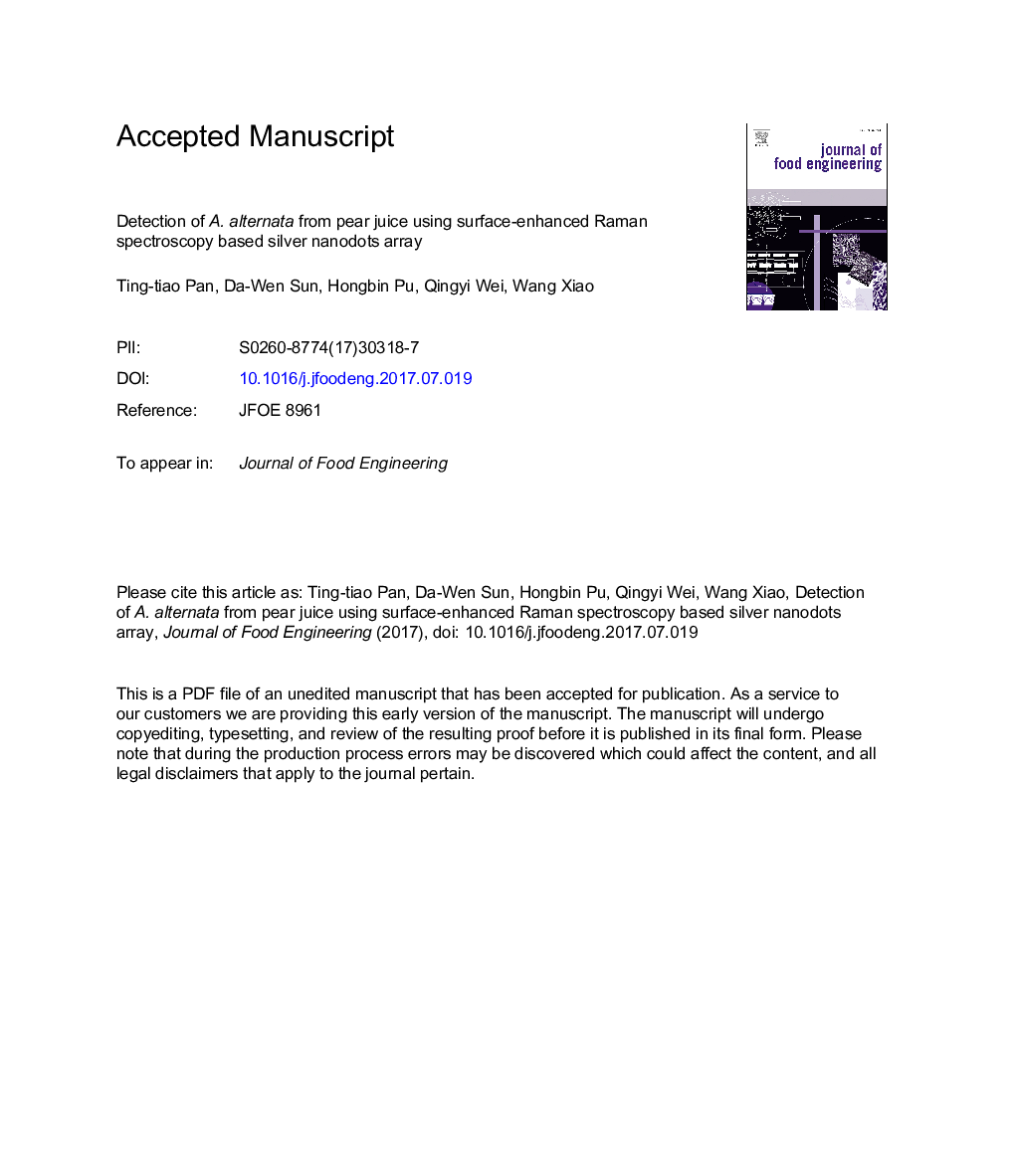| Article ID | Journal | Published Year | Pages | File Type |
|---|---|---|---|---|
| 4908902 | Journal of Food Engineering | 2017 | 37 Pages |
Abstract
In this work, a rapid and accurate surface-enhanced Raman spectroscopy (SERS) based on silver nanodots (AgNDs) array substrate method was used to detect Alternaria alternata (A. alternata) in both sterile water and pear juice (an example of complex food matrix). The substrate fabrication conditions were firstly optimized to obtain the maximal SERS enhancement. SERS and Raman mapping methods were then used to scan the A. alternata adsorbed on the surface of the substrate, and the intrinsic and distinct SERS signals of A. alternata were used as the basis for detection. It was found that using A. alternata in sterile water as a model sample, the method was able to detect the A. alternata with a limit of detection (LOD) as low as 1.0 Ã 103 cfu/mL. Moreover, the newly developed method could also realize rapid detection of A. alternata in pear juice, and the lowest detectable A. alternata concentration was less than 1.0 Ã 104 cfu/mL. In addition, the A. alternata concentration range from 1.0 Ã 104 cfu/mL to 1.0 Ã 106 cfu/mL could be detected by SERS mapping. This study provides a convenient method for the detection of low-level A. alternata in complex food matrix, and further information and guidance for the design of a SERS-based detection.
Related Topics
Physical Sciences and Engineering
Chemical Engineering
Chemical Engineering (General)
Authors
Ting-tiao Pan, Da-Wen Sun, Hongbin Pu, Qingyi Wei, Wang Xiao, Qi-Jun Wang,
